- AUDIO ONE-TO-ONE Call Now: 210-805-9927
- Contact
- Register
- My Account
SoundBites Winter 2014

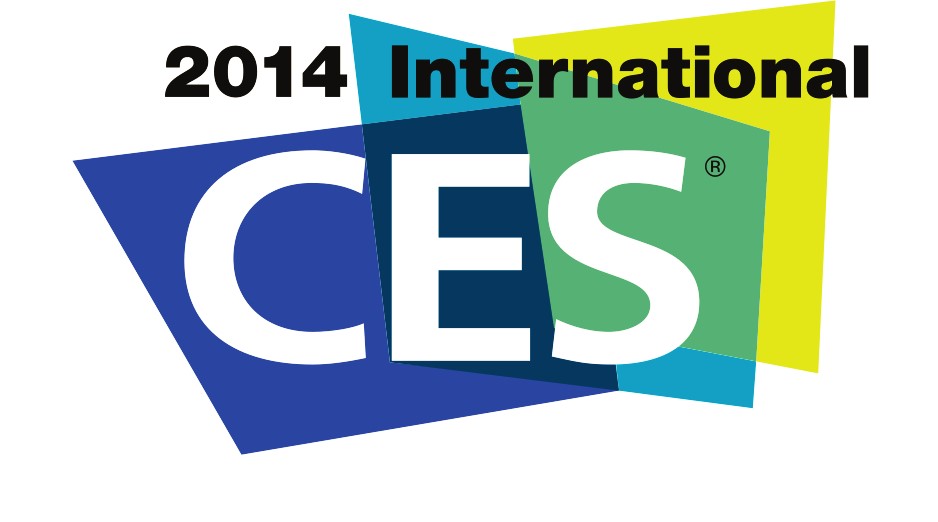
My favorite time of year!
Each year at this time, audio "loonies" from around the World head for the deserts of Nevada and a rendezvous extraordinaire. Otherwise known as the Winter Consumer Electronics Show, it’s THE place to be for those afflicted with that most dreaded of diseases; audiohilia. The atmosphere, the weather, the music and the gear are just the ticket to satiate the most ardent audiophile's appetite. Good things on hand this year, so let’s have a look...
Not sure of the official numbers this year, but attendance was surely affected by the weather on the East Coast that delayed or curtailed travel plans by many attendees. I lucked out. My direct flight from San Antonio was on time and I even had an empty seat next to me – now that’s a great start to the 2014 CES! And a good show it turned out to be, with a number of exciting new product introductions and a few rooms that produced truly delectable sound. Read on!
YG ACOUSTICS: CES is a fairly rushed affair. It can be a bit chaotic, especially when large numbers of listeners populate a manufacturer’s suite. What I’ve noticed is that attendees are up and down out of the listening seats and funnel into and out of most rooms after only a brief stay. Interestingly, visitors to the YG suite react differently… they sit, they listen and listen some more. The sound is so captivating that folks stop talking, settle in and enjoy the music (closed eyes and subtle smiles give away their delight). And many, like me, stay for quite a while - it’s a respite from the fray. This year there was good reason to linger even longer.
To say I’ve been impressed with our Kipod II Signature Passive speakers would be the understatement of the year. I’ve spent many an hour totally engrossed in their remarkable sonic presentation. Short of YG’s stunning Sonja, no other speakers I’ve heard have been as captivating, and that remained true until Tuesday, January 7th this year.
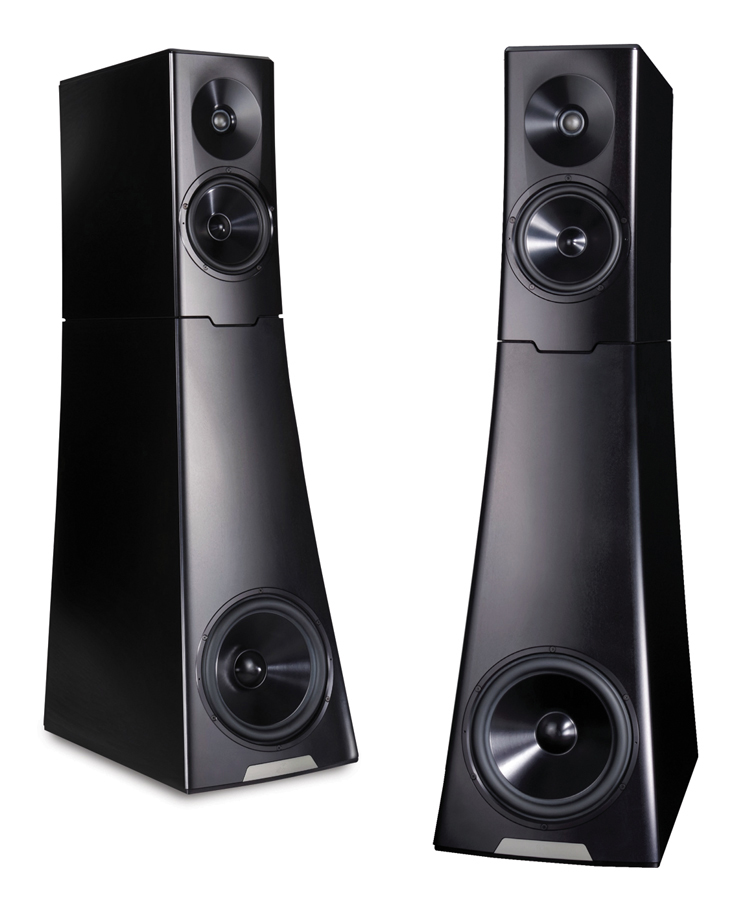
CES 2014 was the launching pad for designer, Yoav Geva’s latest creation, the Hailey… and it’s a stunner! Hailey ’s physical appearance mimics the beautiful, flowing lines of the Sonja, with subtly curved sides. Size-wise, it’s a bit taller than the Kipod, at 48”.
As with the Kipod, Hailey produces images that are rock solid, totally focused and extend far beyond the dimensions of the enclosure. I sensed that the Hailey further expands the vertical sound-space, for an even more immersive experience. The speakers sound much taller than their dimensions suggest. Yet more than just creating a soundstage, the Hailey simply dissolved, leaving behind an immense aural vista, a soundscape that was wall to wall. Luscious!
The ultimate compliment for any speaker (or other product for that matter) is that it draws you into the music, making you want to listen more. While some speakers reach out and grab you on first listen (and these designs, I’ve found, can become fatiguing rather quickly), the Hailey seductively pulls you in for more. Its total lack of grain, the ability to uncover layer upon layer of subtle detail, the pristine clarity - oh my - it’s simply sublime in every aspect of reproduction.
These are speakers that simply must be experienced. When you hear them I think you’ll agree that they are simply “right.” Hailey is priced at $42800pr.
Two years running the YG suite was, for me, easily the best sounding room at the show.
BERKELEY: Berkeley Audio Design is extremely pleased to announce the new Alpha DAC Reference Series! The stunning performance of the Alpha DAC led to immense popularity and a bevy of over-the-top reviews from around the World. The Alpha DAC Reference Series promises to continue Berkeley’s tradition of standard-setting performance with an all-out assault on the state of the art.
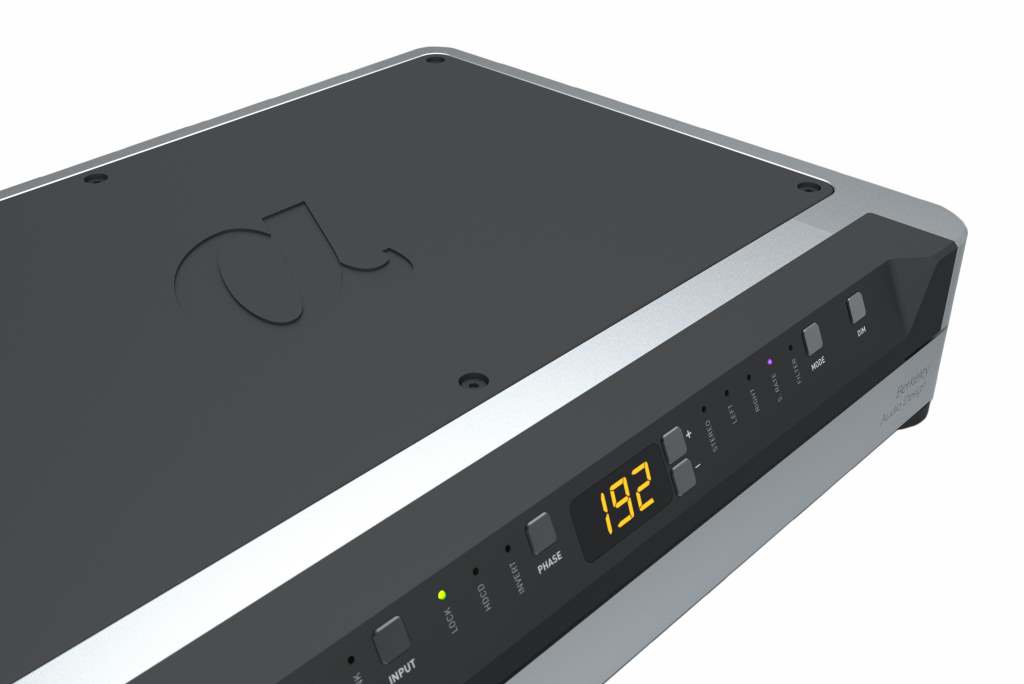
From Berkeley’s press release: The Alpha DAC Reference Series embodies everything we know about digital to analog conversion taken to an unprecedented level - a level that requires new design concepts and new components at the edge of what is possible. The result is an immediacy and presence of music reproduction that is simply real.
We literally designed the Reference Series before it was possible to build it. Almost three years in development, the Alpha DAC Reference Series uses components designed to our specifications that were not commercially available. Several suppliers were not able to meet our requirements which delayed the release of the Reference Series by more than a year. But those obstacles have been overcome and now the Alpha DAC Reference Series is a reality.
The presence and sonic reality of the Reference Series is the result of digital to analog conversion at a new level of accuracy made possible by tremendous electrical and mechanical noise isolation coupled with extreme time domain stability. Ceramic circuit board materials are used in all critical areas and the enclosure is carefully engineered to minimize electrical noise and maximize mechanical stability. The Alpha DAC Reference Series weighs over 40 pounds and the entire enclosure is precision machined from a solid billet of 6061-T6 aluminum alloy.
Careful consideration was given to providing the highest possible fidelity reproduction of DSD files by the Alpha DAC Reference Series. 99% of modern DAC’s use multi-bit D/A converters because they provide better performance than 1-bit converters - even those who advertise “native” DSD compatibility. So, at some point, the 1-bit DSD stream must be converted to multi-bit for all of those DAC’s.
We could, like many other manufacturers, convert 1-bit DSD to multi-bit within the Alpha DAC
Reference Series and show “DSD” in the front panel display. That would be the easiest approach from a marketing perspective. But that would also mean increasing the amount of processing in the DAC during playback which would degrade audio quality, and audio quality is the reason the Alpha DAC Reference Series exists.
Fortunately, virtually all reproduction of DSD files using external DAC’s occurs with a computer based music server as the source. If the 1-bit DSD to multi-bit conversion is done first in the computer it can be performed with extremely high precision and superior filtering that preserves all of the content of the DSD file. Computer DSD to multi-bit conversion can be at least as good as that performed in a DAC and without adding processing noise near or in the D/A converter chip. Another advantage of computer based DSD to PCM conversion is that if higher performance DSD versions such as DSD 4x appear in the future, they can easily be supported with a software upgrade.
For all of those reasons, DSD capability for the Alpha DAC Reference Series is provided by an included state of the art software application that provides either real time conversion of DSD 1x and DSD 2x to 176.4 kHz 24 bit PCM during playback or conversion to 176.4 kHz 24 bit AIFF or WAV files. The software application is included in the price of the Alpha DAC Reference Series and is compatible with either Windows OS or Mac OS based music servers.
The Alpha DAC Reference Series supports 32 kHz to 192 kHz 24-bit PCM through four inputs; balanced AES, coaxial SPDIF 1, coaxial SPDIF 2 and Toslink optical. Independent, single-ended and true balanced analog outputs are provided.
We can hardly wait for our Alpha DAC Reference Series, which should be in hand shortly; you’ll want to give us a ring for a full report on this incredibly interesting piece. $14,000.
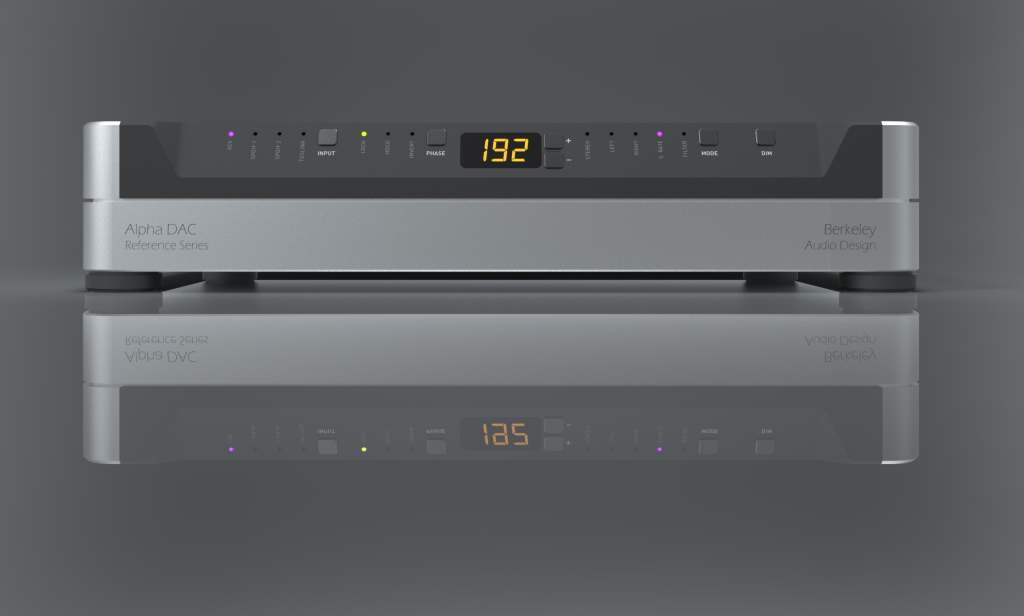

AURENDER: We are not alone in ranking the Aurender Music servers among the world’s best. Unfortunately the S10 at $6990 and W20 at $16800 don’t fit every budget. So we are thrilled with their introduction of two new models that will allow many more audiophiles to enjoy this level of performance performance.
The X100 Series digital music players incorporates many innovations originally developed for the higher priced Aurender S10 and W20 models, including the solid-state drive cache for playback which completely eliminates jitter, latency and noise resulting from spinning hard drives and compact disks. The X100 Series models also uses the same high performance USB digital audio output as the flagship Aurender W20 with proprietary power circuitry to eliminate noise in the audio signal and is carefully shielded against RF interference.
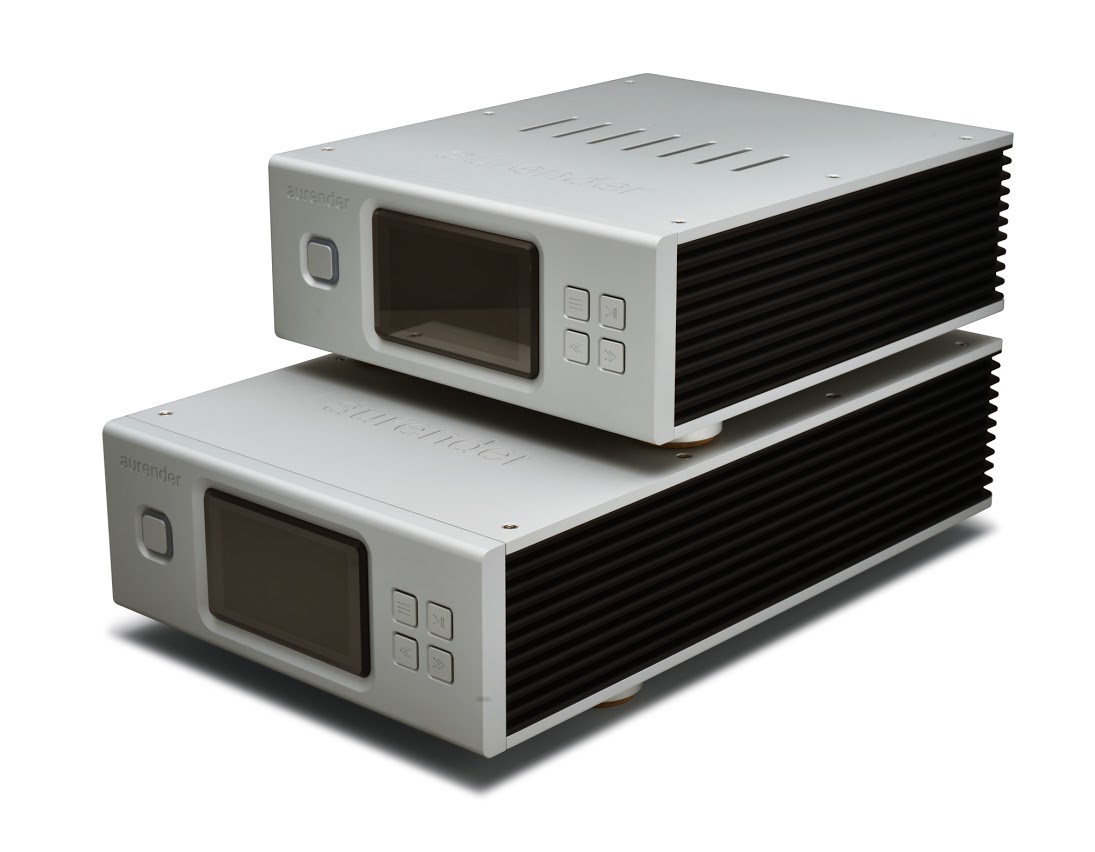
Designed to make managing, viewing and playing digital music collections fun and easy, the X100 players support bit-perfect playback of DSD (DIFF/DSF), WAV, FLAC, ALAC, APE, AIFF, M4A, and other major formats at native bit and sampling rates. The X100 units are equipped with a high performance USB digital audio output and features a Gigabit Ethernet port for software upgrades, file transfers and network connectivity, two USB data ports, internal hard drive for storage and 120GB solid-state drive cache for latency-free playback.
While the Aurender X100 Series models can be operated using the front panel buttons, the Aurender Conductor App for iPad® and iPad Mini is the most convenient way to sort, browse and play music, in addition to setting various options on the X100 such as display mode (song information, level meter, playlists, device information), power mode (On/Off or Standby), DAC options and more. The Aurender S10 and W20 models also use the Aurender Conductor App as the user interface. Originally introduced in 2011, the Aurender Conductor App undergone several upgrades to add new features and improvements in collaboration with Aurender users and industry partners. With just a press of a button or a flick on the iPad, entire music libraries can be instantly sorted into various categories, custom categories, by bit and sampling rates, and by user rating. Designed for large digital music libraries, the Aurender Conductor App has extensive features to make sorting, viewing and playing fast and easy.
Two versions of the new model are available, differing only in the size of the on board hard drive used for storage (both employ a 120GB solid-state drive cache for latency-free playback). The X100S includes a 1TB drive; the X100L has 6TB of storage (two 3TB drives) and are $2,999 and $3,499 respectively. Shipping begins in February or March. Be sure to get an order in early as these units will no doubt be extremely popular!
SHUNYATA: Have you heard the Shunyata Alpha Digital ($995) power cord? You must! Compared to a standard power cord used on a digital component, the sonic improvement offered by the Alpha Digital can be transformative. Designer Caelin Gabriel has fine tuned his patented ZiTron circuit to deal specifically with the type of noise produced by digital components. You see digital circuitry (and switch mode power supplies) kick back particularly intrusive hash onto the AC line that then pollutes other gear on the same circuit. Primarily high frequency in nature, digital noise pollution can be particularly nasty, resulting in significant system-wide sonic degradation. The Alpha Digital effectively reduces the digital garbage and improves not only the component it is used with, but benefits other gear in the system by reducing cross pollution. Let us send you one; I think you’ll be pleasantly surprised!
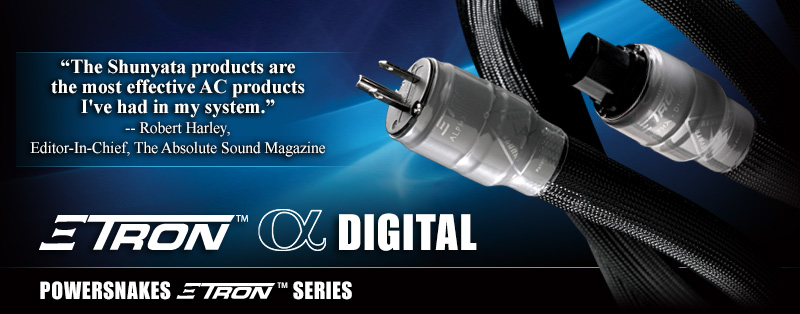
The success of the Alpha Digital led Caelin to experiment with optimizing the ZiTron for noise spectra commonly associated with analog components and thus was born the Alpha Power Cord. Just released at CES The new Alpha (for analog components) is available in two versions, the Alpha ($995) and Alpha HC ($1250) for high current applications.
We’re awaiting arrival of our first samples which should reach us by the time you receive this Newsletter in the mail. If the results are anything close to Alpha Digital, the Alpha should be another winner!
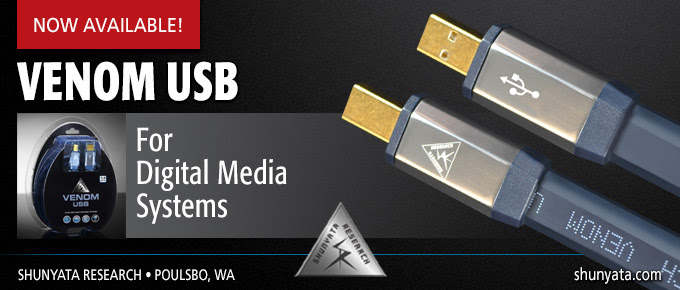
Announced just after CES, the new Venom USB looks to be a lot of cable for the money. According to Shunyata, this is not a reworked USB printer cable - it was designed specifically for Hi-Rez Computer Audio. The Venom USB uses an unheard of array of quality parts and materials including massive 20 gauge, silver-plated copper conductors, triple shielding and premium gold plated connectors.
Available lengths are .5 meters ($95), 1.5 meters ($145) and 3 meters ($220).
 Shunyata Alpha Digital Power Cord
Shunyata Alpha Digital Power Cord
JEFF ROWLAND: On display at CES was the final version of the new Model 125 stereo power amplifier ($2950). Their entry level model, the 125 is a compact design matching the dimensions of the Capri Series II preamplifier ($3950) at a svelte 2.6” in height and 13.7” wide. Combine these two units for a glorious and ultra-compact pre/power combo.
The latest version of the Continuum S2 integrated amplifier ($9500) arrived here a few months back and I was immediately impressed, to say the least. The piece wowed The Audio Beat’s Roy Gregory as well, and you can read about it in his latest review here. A quote from the article: “For me it has scored something approaching and audio hat-trick: an integrated amp that establishes a new benchmark for one-box performance.” - Roy Gregory
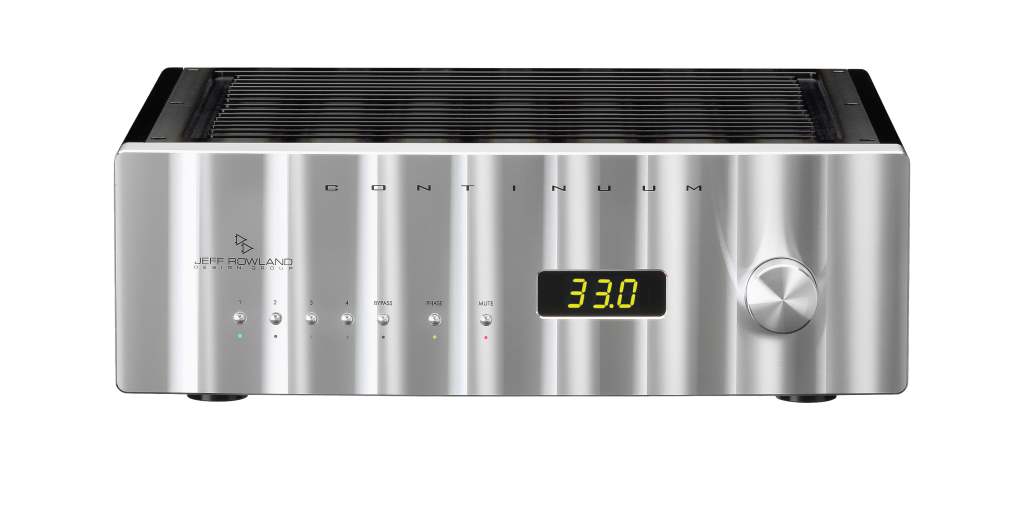
Offering a staggering 400 watts per channel at 8 Ohms and 800 watts at 4 Ohms, the Continuum S2 has the muscle to drive any speaker, and does so with the refinement and grace only a Rowland design can offer. The Continuum S2 can be had with an optional internal DAC ($450) or phono stage ($350) making it a complete one-box option for many listeners. Follow this link for a video introducing the Continuum S2.
The Aeris DAC ($9800) continues to impress with no less than nine reviews, each singing the praises of this remarkably transparent and revealing component. The Aeris is also quite at home driving power amplifiers directly (as we do here with our 725 monoblocs), eliminating the need for a preamp in an all digital system.
The absolutely jewel-like metalwork on Rowland gear is the result of master machining expertise and painstaking attention to detail by Vertec in Colorado. Have a look at this online video showing the chassis and front panels being sculpted from solid blocks of aluminum in an exacting machining process. Very impressive!
 Jeff Rowland Design Continum S2 Integrated Amplifier
Jeff Rowland Design Continum S2 Integrated Amplifier
BRYSTON: Congratulations are in order for Bryston whose products have earned a total of 25 industry awards this year. The BDA-2 was named, by Secrets of Home Theater and High Fidelity, to be the Best High End DAC of the year. The Absolute Sound also included it and the BDP-2 high resolution digital player among Editor's Choice recipients. Stereophile Magazine placed it and the venerable BDA-1 and BDP-1 in its list of Class A products. Their newest integrated amplifier, the B-135 SST2 was chosen as the Product of the Year by Soundstage! as well as Editors’ Choice by The Absolute Sound and it earned an Ultimate HiFi Designation from HiFi News. Finally, the outstanding BHA-1 headphone amplifier was chosen by Tone Audio as Product of the Year.
Bryston had a full demo suite this year featuring their new Middle T speakers. Digital playback from the BDP-2 was being decoded by The Absolute Sound's DAC Product of the Year, the BDA-2, and sent along to their BP-26 line preamp with a pair of the mighty 28BSST2 mono power amplifiers at the end of the signal chain. Sound was excellent.
This was my first opportunity to hear the Bryston speakers, and I must say I was surprised. Who would have thought that an electronics manufacturer could jump into the speaker game with success? Not me. But I was wrong.
The Middle T system was coherent, neutral, extended and very dimensional. I noticed right away the lack of any absorbers or diffusors in the room, and it didn’t sound like any were needed. Primary designer, James Tanner, explained that the speakers have an amazingly linear polar response, which reduces many of the negative room interactions common with competing designs. Another benefit of this technical advantage is a wider than usual listening window, resulting in quite acceptable off-axis performance, a real boon when multiple listeners want to enjoy the music.
Bryston speakers were never intended to be marketed. What began as a personal goal of Mr. Tanner to develop a reference speaker for his personal use expanded when others heard the fruits of his labor and convinced him Bryston should offer the product for sale. Several models followed to span a range of pricing and thus were born the Model A and Model T Series.
A secondary system led by the BHA-1 headphone amplifier demonstrated its superiority in the personal-audio space, but also to highlight their newest digital component, the BUC-1. The BUC-1 is an audiophile intermediary that asynchronously pulls high resolution audio from the USB port of a computer and sends a digital signal along to the DAC of your choice via SPDIF or AES/EBU outputs. Price is $750.
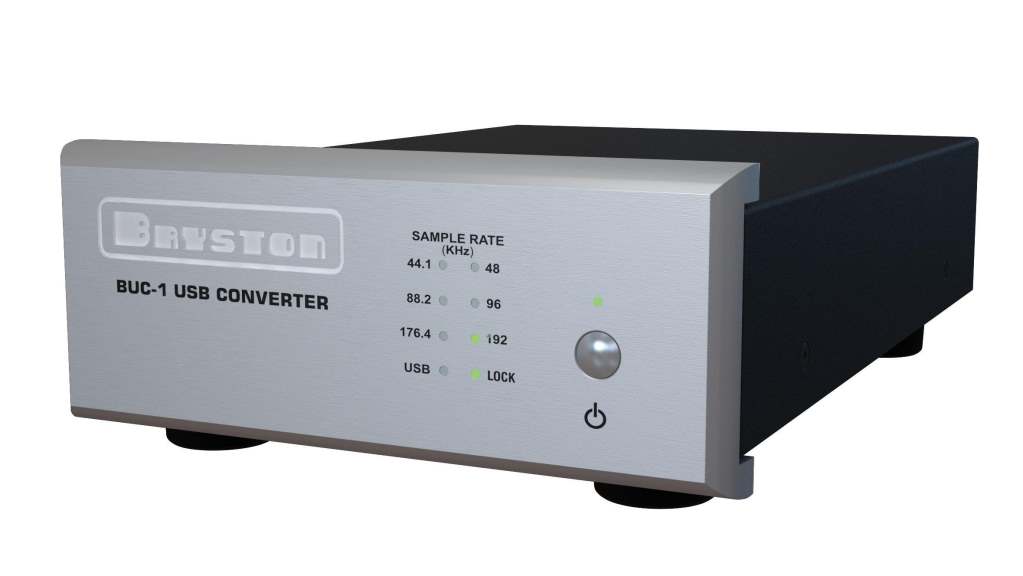
 Bryston BUC-1 USB to SPDIF Converter
Bryston BUC-1 USB to SPDIF Converter
Hi Fi MAN: The well respected manufacturer of planar driver ‘phones displayed the new HE400i ($499) and the HE560 with teakwood ear cups ($899). The HE560 is said to be a bit easier to drive than their previous high end models, with a sensitivity of 90dB and 38 Ohm impedance. Look for the new models in the spring.
The Company also showed two new portable music players, the high-resolution $699 HM-802, and CD-resolution $249 HM-700, and that one will come with HiFiMan's superb RE-400 in-ear headphones.

ZESTO AUDIO: The always welcoming Carolyn and George Counnas introduced their new Bia all tube amplifier at T.H.E Show (an alternative to CES that runs concurrently). The name for the amp was drawn from Greek Mythology, Bia is the Titan Goddess of power and force.
The recent unabashedly over the top review by Bob Levi in Positive Feedback has sparked a tremendous interest in the Bia. A quote is in order (hold onto your hats!).
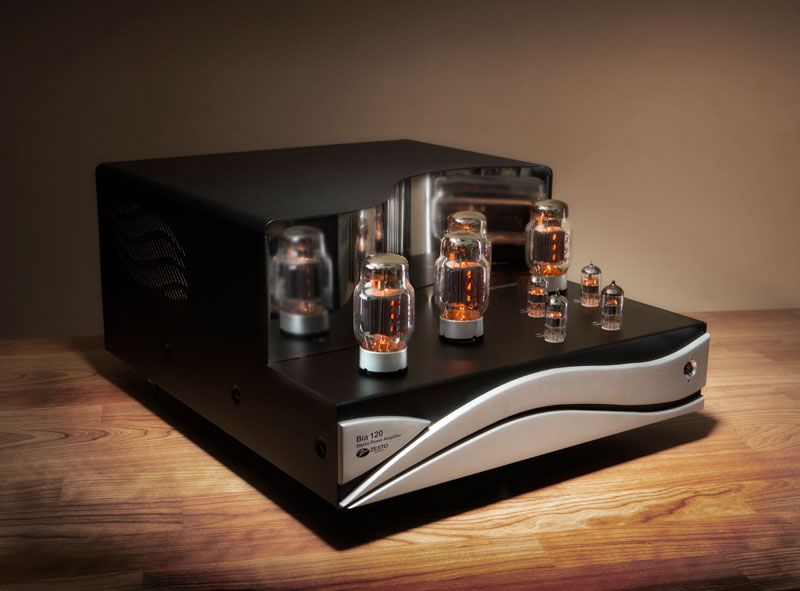
“That's right. What George delivered to me to review was not just another very fine piece of Zesto gear to match his excellent efforts to date. What he delivered to me was the best tube amp I have heard in 50 years. Actually, it is the best amp, tube or solid state, I have heard in 50 years. It is so maximally revealing and neutral all at once as to be something quite new and quite exciting. It is wondrously powerful with a custom power supply never before used in an amplifier, which propels two KT88s to produce legions of watts and rivers of current to make your speakers sing.
“I am flabbergasted. The more I listen to the BIA 120, the more I am certain this magnificent amplifier is the real McCoy! The BIA 120 is a state-of-the-art tube amplifier. The BIA 120 has superb clarity, depth, neutrality, realism, nuance, elegance, and ultimate definition that a great tube amplifier should have. It has the kind of snap, low distortion, freedom from noise and haze, tight fast bass, speed, and slam you would expect from great solid-state amps. It has none of the troublesome problems or sonic artifacts of either tube or solid state designs. It is neutral like no other tube amp has ever been in my experience. It is a wonder!
“Zesto has created an amplifier that, when placed with the best ancillaries, will give you the experience of the musical performance with ground-breaking intense realism. The only things missing will be the sticky floors and the expensive tickets. I have never heard a better amplifier in my reference system, tube or solid-state. It is the best new tube amplifier to reach the market in the last five years priced under $50,000. That it costs $12,500 is a boon to audiophiles everywhere, and a minor miracle. What a value!
“I will dare to say it: the BIA 120 is the missing link, that wondrous piece of mythical tube gear that bridges tube and solid state amplification! It has the best sonic qualities of both types of circuitry, with none of the flaws of either. The Zesto Audio BIA 120 Class A Stereo Power Amplifier is that amplifier, and is finally here. Bravo to George Counnas for bringing his genius with power supplies and circuit design from the far flung fields of radar and recording to fine audio. Bravo to Carolyn Counnas for designing a beauty of a piece that looks like its sailing in the musical breeze. In a word, stupefying.”
Wow, can’t get much better than that! We heard the Bia at CES and were quite impressed. More to come. $12500
 Zest Audio Bia Full Tube Power Amplifier
Zest Audio Bia Full Tube Power Amplifier
CLEARAUDIO: The new TT1i tangential tonearm was debuted. The massive linear tracker is designed for the Innovation and Master Reference Series decks, and comes in at a cool $30K.
Also new, Clearaudio’s Absolute moving coil phono stage system. Unique to the design is a tiny circuit board that is installed in the headshell of the company’s TT1, TT2 or Universal tonearms, which mates to a separate main component chassis. The tonearm-mounted circuit first amplifies the highly sensitive MC signal at its source, significantly reducing noise and distortion. The signal is then sent to main chassis for additional amplification and RIAA equalization. $15k
PARASOUND: The previously announced JC3+ phono stage ($2850) was officially debuted here at the show. Its predecessor, the JC3, was a standout product and the new + model is sure to be a monster! Here's the lowdown.
The new JC 3+ phono preamplifier is an improved version of the acclaimed JC3, both designed by John Curl, creator of the legendary Vendetta phono preamps. The unit features independent variable MC load adjustment capability for each channel, from 50 - 550 Ohms, using dual-gang potentiometers specially made for Parasound by Vishay.
With Curl and circuit-board designer Carl Thompson, the JC3+ has been seriously tweaked to further reduce its already low background noise to vanishingly low levels. The phono module boards now feature 24 karat gold plated copper traces for the utmost in conductivity to provide exceptional transparency and detail retrieval. The power supply has been significantly upgraded with 47% larger, low ESD, power supply filter capacitors. This provides a much greater current reserve for head-snapping dynamics. The R-core power transformer is 82% larger than before, providing greater reserve for low end impact that’s beyond imagination. Finally, the company is offering the ability to turn off illumination of the front panel P logo.
The units release has created a ground swell of interest with Parasound having sold out of the first production run before the first one had been shipped! Glad we got our order in early, hope you did too.
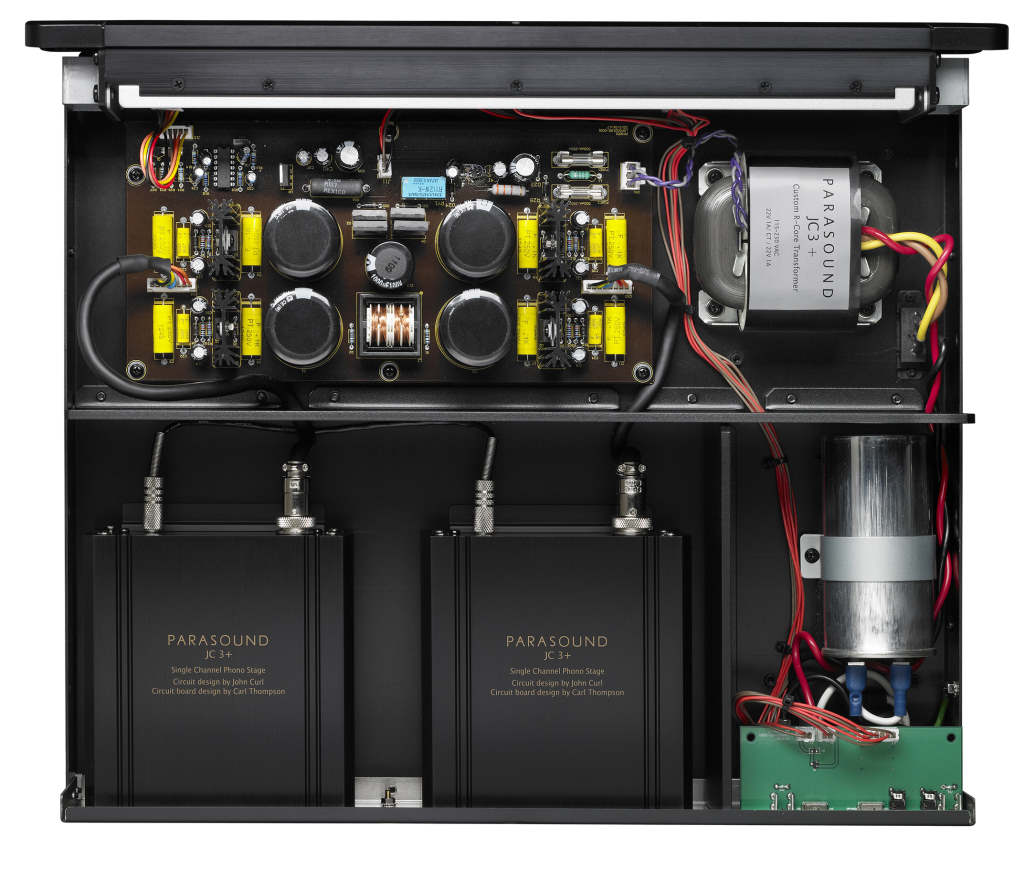
 Parasound JC3+ Phono Preamplifier
Parasound JC3+ Phono Preamplifier
CREEK: Mike Creek introduced me to his new Evolution 50CD player. At just $1495 the 50CD features a slot-load disc mechanism, dual Wolfson WM8742 DACs per channel and offers five user-selectable filter settings to fine tune the sound to preference. The unit offers multiple inputs: 2 x SPDIF, 24 Bit 192 kHz, transformer isolated, 2 x TOSLINK, 24 Bit 192 kHz, optically isolated and 1 x USB, 24 Bit 96 kHz, galvanically isolated. Optional Bluetooth connectivity is available, $150.
Also displayed was the currently available 50A integrated ($1195). The slim-line design puts out 55 watts into 8 Ohms, but those are “Creek Watts,” meaning it’ll play far beyond what you might expect from the numbers. The power supply, always a primary design concern for Mr. Creek, utilizes a massive 200 watt transformer. Current output is a surprisingly stout 26 Amps.
New for the 50A are two plug-in boards. One is an FM tuner, the other includes a DAC. Prices have not been announced.
HAGERMAN AUDIO LABS: Jim Hagerman offers a number of very interesting and useful products, we'll talk about two here, first up is the FryBaby Burn-in Generator. FryBaby is a compact and portable cable and audio electronics burn-in generator that offers a number of unique features that make it an 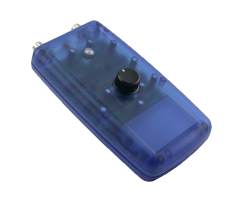 invaluable tool for any serious audiophile. The Fry Baby offers three selectable output amplitudes, two low-level inverse-equalized for MC and MM phono stages, and a third at line-level for preamplifiers, amplifiers and directly burning-in cables. It can be powered from either a 9V battery or AC power supply (included). You also get a break-in CD for conditioning CD players, an RCA loopback adapter, and binding post adapters. The FryBaby is a very flexible and low cost solution for all your audio break-in needs.
invaluable tool for any serious audiophile. The Fry Baby offers three selectable output amplitudes, two low-level inverse-equalized for MC and MM phono stages, and a third at line-level for preamplifiers, amplifiers and directly burning-in cables. It can be powered from either a 9V battery or AC power supply (included). You also get a break-in CD for conditioning CD players, an RCA loopback adapter, and binding post adapters. The FryBaby is a very flexible and low cost solution for all your audio break-in needs.
Priced at $250, it's an accessory that most every audiophile can afford, and one that comes highly recommended!
Reviews:
"While I am unable to offer any direct comparisons with other cable run-in devices, I can say that when used as directed, it delivers everything it promises—and in a BIG way. I have found it to be appreciably superior to any of the half dozen or so run in "discs" I have on hand. The benefits it brings to cables alone make it worth the price of admission.
"The significant differences post FryBaby treatment were an overtly more relaxed presentation, markedly more natural timbre, greater articulation, especially at both frequency extremes, and an overall quieter background. While intended for the "seasoning" of "green" products or cables, I want to point out that it made a perceptible contribution to products I have used regularly for extended periods of time, most especially cables. In fact, with some cable sets, I am convinced that I have NEVER heard their full potential pre FryBaby. Two thumbs up, WAY UP!" - Greg Weaver, Positive Feedback, Writer's Choice Award
"I was in a shock, that was my first reaction. This is one of the best tweaks I've ever tried ... fuller tones; more refined treble; bigger/deeper stage; instruments with a bigger body; more air; better sustain of instruments ... only after two or three seconds, it's so obvious that bass got more breath and freshness; bigger, deeper, wider and richer soundstage; more breath and body in bass; richer in the middle; warmer vocal; better sustain; you can feel and touch the singer who is here in my room ... the difference was SO obvious and audible." - Marko Pecotic
"The sound that came out of the speakers was in all aspects - BETTER. The color of sound didn't change, but colors were richer and clearer. The background of soundstage was completely dark, so it was easier to see the musicians and instruments. The character of instruments has become more natural. FryBaby is a very recommended component! Each and every serious audiophile should own it." - Robert Kocijan
Customer Feedback:
"So far I've burned in two pairs of interconnects. There is quite a difference in the sound: improved clarity, more air, bigger soundstage, more robust bass, and improved dynamics. Overall everything is clearer and has more impact. This is a very effective device.
"I really depend on these, as my recording duties constantly require me to 'break-in' new microphone cables of varying lengths - generally 10 to 20 feet! in length, quite a difference from the usual 'audiophile' 1 meter standard RCA interconnects! The long lengths really seem to effect the sound - starting as quite 'muffled' and 'closed-in,' but gradually changing (over the period of about one month!) to a very 'open' and 'dynamic' sound, which is what I am looking for. I don't think that most of the 'studio' recording people are aware of this effect. Their attitude is more generally 'wire-is-wire' with little appreciation (that an audiophile would have) of how the passive components can radically effect the sound.
"I borrowed my friend's Fry Baby recently to burn in my Grover Huffman cables. These ICs had thousands of hours on them and sounded very good, so i was not expecting the excellent results i heard. Initially i did the phono cables and then the ones from the phono stage to the linestage and then the pair from the linestage to the amp. With just the phono cables burnt in, i noticed a bit more detail, but nothing major. After the 2nd set of cables i was hearing much more detail and a big improvement in everything! Of course by the time the 3rd set was burnt in that really made a difference. What i heard was way better extension at both ends and bloom and decay to die for. My soundstage grew in width height and depth. Overall I'm very impressed as i hadn't expected such an improvement. What a fantastic item you've made with the Fry Baby!"
Features:
• Break-in cables, electronics, and phono stages
• Three output levels
• Unique, scientifically created waveform
• Power supply included
• Break-in CD included
Specifications:
• Output Amplitude: 1Vrms
• Output Impedance: 100 Ohms
• Noise Bandwidth: 200Hz - 20kHz
• Modulation Sweep Range: 2Hz – 200Hz
• Size: 3” x 5” x 1”
• Power Requirements: 120V AC, 240V AC or Battery
A unit designed for power cords, FryCorder, is also available. Just plug the unit into the wall outlet and it sends the sophisticated burn-in signal (a combination of wideband noise and swept amplitude modulation) into the cable connected as well as the wiring circuit. 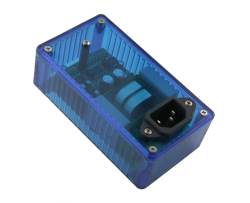
Features:
• Break-in power cords
• Break-in house electrical wiring
• Unique, scientifically created waveform
• Powerfully effective output
Specifications:
• Output Power: 1W peak (both Line and Neutral)
• Signal Bandwidth: 1kHz to 100kHz
• Modulation Sweep Range: 10Hz to 200Hz
• Size: 2.5" x 4.5" x 1.5"
• Power: 120V AC or 240V AC

ESOTERIC: Esoteric introduces the flagship Grandioso Series of components and includes the Grandioso P1 CD/SACD transport w/separate power supply and Grandioso D1 dual mono DAC and M1 power amplifier.
The twin-chassis D1 employs the latest AK 4495S DAC chip set with a stunning 16 DACs used per channel for phenomenally precise linearity and ultra-low noise. In addition to direct processing of the DSD signal, a new algorithm has been adopted for analog conversion of PCM at 36-bit resolution. The D1 resolves 32 bit up to 384 kHz PCM, 32 bit up to 2.8/5.6 MHz DSD (DoP and ASIO 2.1). Read more here:
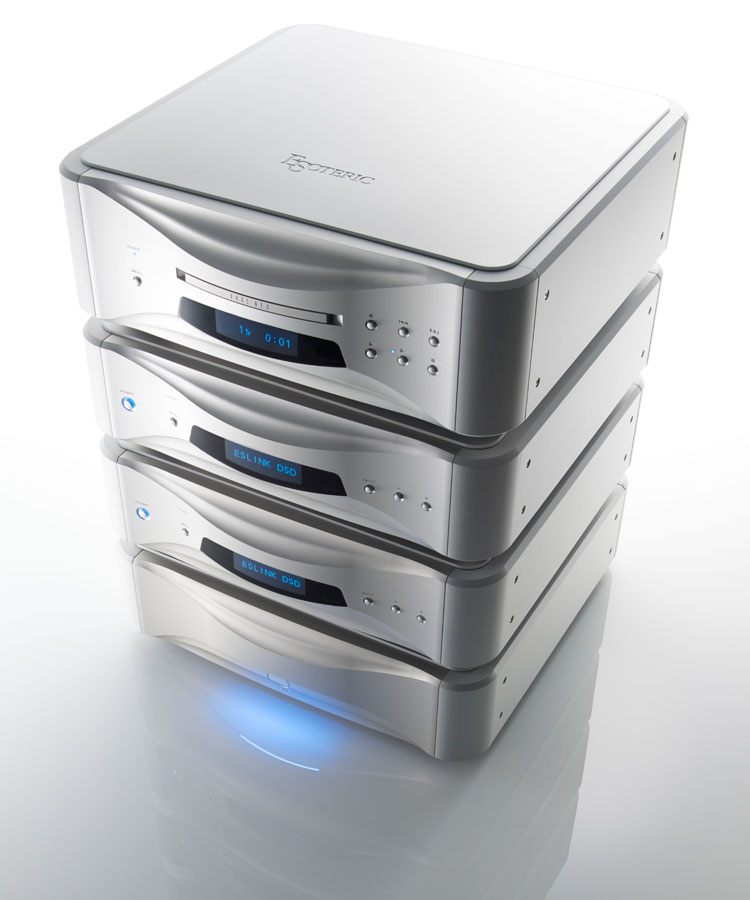
The P1 SACD/CD transport uses Esoteric's VMK-3.5-20S VRDS-NEO. Further refinements have made remarkable improvements in readout accuracy and correcting surface-shake during rotation through an improved drive circuit and pair-matching the ball bearings used in the spindle shaft assembly.
The Grandioso M1 Mono Power Amplifiers were also introduced. They offer 300 W 8 Ohms, 600 W at 4 Ohms. For more info visit the Esoteric Grandioso website.
AUDIO PHYSIC: Several suites were featuring Audio Physic speakers. Models included the Scorpio 25 (Simaudio), Avantera Plus (Shunyata) and Classic 10 (Nordost). All sounded great. It’s hard for me to understand why this finely crafted range from Germany doesn’t get more press here in America. Every one of their models offer exceptional performance at the price range and deserve a great deal more attention from the audiophile publications. Who knows, maybe it’s because they don’t pay for lavish spreads seen by some manufacturers that they don’t garner the consideration. Bottom line, Audio Physic products should not be overlooked if you are in the market for a new set of loudspeakers.
ORTOFON: The latest introduction from Ortofon is their MC Quintet Series of low output (0.3mV – 0.5mV) cartridges. The Quintet Series’ right angles, straight lines, stylus visibility and ample distance between the record surface and the cartridge’s bottom will make it easy to mount and align the cartridge and tonearm correctly. Neodymium magnets are implemented to achieve an optimal output and low internal impedance makes the cartridge less sensitive to load for compatibility with the widest range of preamps. The Quintet Series gives excellent results with most common tonearms.
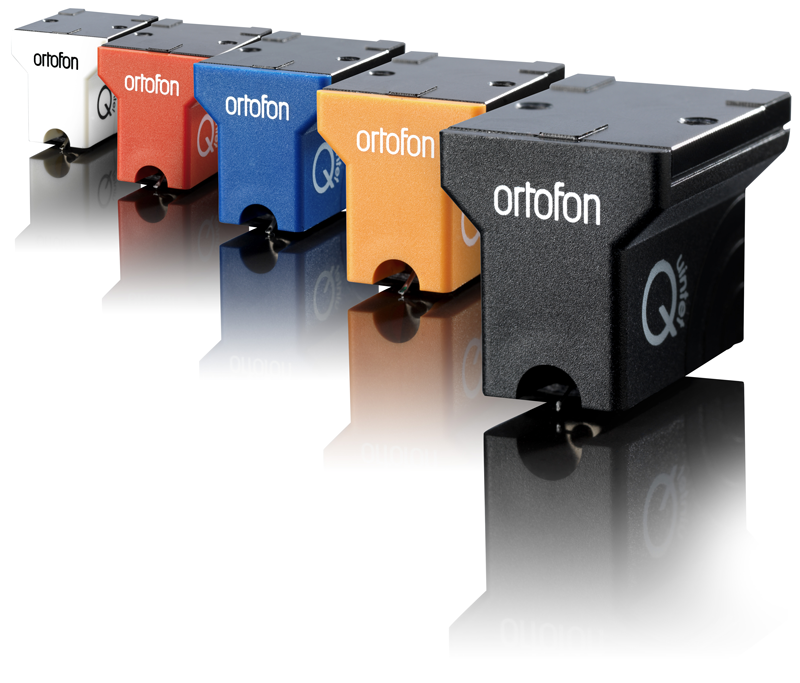
Each of the five Quintet cartridges has its own individual sonic personality, and all five models together represent the ensemble of five classic variations:
- MC Quintet Mono is a true mono cartridge for playing mono microgroove vinyl records. $499
- MC Quintet Red is an all-purpose cartridge that delivers open, dynamic sound with a slight touch of warmth. $299
- MC Quintet Blue adds more dynamics and resolution, sounds more open and reproduces more details. $499
- MC Quintet Bronze adds even more details and resolution but in a very evenhanded way that pays respect to all elements. $799
- MC Quintet Black is the best of everything, true to the groove with resolution and accurate insight into each recording. $999
GOLDEN EAR: The long anticipated flagship Triton One ($5000) made its debut at CES. Designer Sandy Gross was on hand playing a wide range of material, exercising his latest creation to the fullest.
The external appearance mirrors the Triton Two and Three, but is the tallest of the three standing 54” high. Three forward-facing 5”x9” sub-bass drivers are arranged in a semi line source array and driven by a 1600 watt internal amp. These are augmented by two pairs of horizontally opposed, internally balanced 7”x10” planar sub-bass radiators located on the sides of the enclosure. Upper midrange is handled by two 5-1/4” drivers with high frequency reproduction courtesy of the company’s outstanding High Velocity Folded Ribbon tweeter.
Fans of Golden Ear speakers will undoubtedly revel in the sound of the Triton One as it retains all the qualities and character the line is known for.
Tonal balance is more similar to the Triton Seven than either the Two or Three, which is to say a bit more neutral than weighty. Look for availability in late spring or early summer.
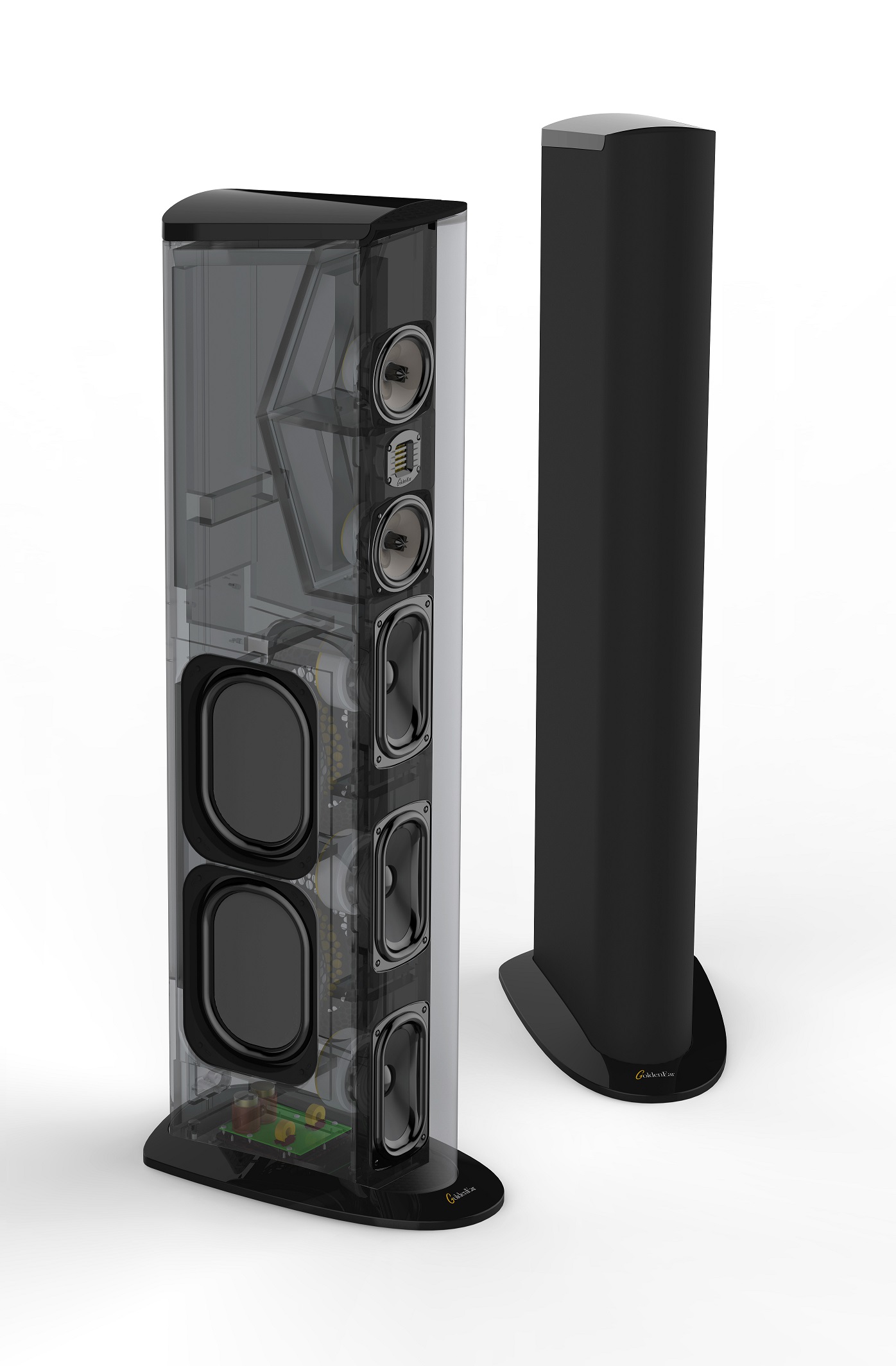
MUSICAL SURROUNDINGS: Michael Yee, designer of the Phonomena series of phono preamps, has been working on a DAC for the past three years. Michael knew there were a confusing array of DACs already available in an overcrowded marketplace, and not wanting to produce a “me too” product looked in a different direction for the design of his product. And so his MYDAC II is totally unique, software driven circuit executed using a Field Programmable Gate Array, or FPGA. Think of the FPGA as a computer, which is capable to many tasks depending on the software being run. And so the FPGA allows Michael to program it to decode digital using his own algorithms. This solution also allows for updates to the code at any time in future, so there’s no fear of a DAC chip being soon outdated. Cool.
According to my friends at Musical Surroundings, the MYDAC II recovers low-level musical, textural and spatial information making for a very analog-like presentation. Introductory price is just $999, and it’s made right here in the USA!



